We live in a world characterized by gender inequality. Throughout the globe, women continue to struggle for equal wages, access to capital and financing, training, supply chain inclusion and more. This state of affairs is unfair, unethical and unwise. Reams of research show that investing in women is not only the right thing to do, it’s the economically smart thing to do—for women and men. For example, the OECD has demonstrated the correlation between economic inequality and other injustices like hunger, unequal access to education and gender-based violence. Women with increasing income have been shown to invest more than twice the amount that men do into their families, and to support their local communities. A recent McKinsey Global Institute report fully quantifies the economic cost the world faces because women are not empowered. According to McKinsey, if women were to play the same role in labour markets as men, as much as $28tn could be added to global annual GDP by 2025.
By now, most global development leaders should understand that empowering women is critical to increasing global prosperity. Frankly, I hope I never have to write another paragraph about why focusing on women is so important. As I stated recently at a G7 convening on the topic, I believe the question about women’s economic empowerment is no longer WHY, but HOW. Enough with research agendas. Let’s focus on global action.
The Criterion Institute’s latest report, State of the Field, moves us forward by outlining specific ways to select and deploy investment vehicles to support women and girls.
Criterion’s report explores the field of gender-lens investing and explains how it can help women reach their full economic potential. Gender-lens investment strategies consider profit, but also examine the process by which financial gains are made—with the dual goal of stimulating economic growth and improving the quality of life. I believe in this investment model, and encourage my colleagues in the social enterprise field to adopt a gender-lens approach in their own financial endeavors or support activities.
Happily, many of the member organizations of the Aspen Network of Development Entrepreneurs are actively engaged in supporting women entrepreneurs through investment and capacity development initiatives.
I see the potential of investing in women through our member Bead for Life, which recently launched a six-month “Street Business School” pilot programme in Uganda, with the goal of equipping women with confidence, entrepreneurial skills and mentoring support needed to become successful entrepreneurs and create sustainable businesses. The business training offers simplified and practical sessions on market research, business plan development, bookkeeping, money management, customer service and advertising. Upon completing the programme, Bead for Life found that 84 per cent of graduates had started at least one business and increased their personal income on average by 54 per cent. The most significant impact to date has been on the most impoverished people that participated in the programme. The women living on 65 cents per day or less at the start of the programme have seen an average income increase of 531 per cent.
I am also impressed by the work of Oxfam, and their Women in Small Enterprise initiative. Launched in 2009, this programme is designed to support women entrepreneurs who have emerged successfully from microfinance lending programmes and have the potential for further growth. Core components of the initiative include training programmes to build skills and confidence, as well as partnerships with local banking institutions to help women receive loans at better rates and for longer terms than they have typically been offered. Loans are also backstopped by Oxfam America’s first impact investing fund, whose resources serve as collateral for women participating in the programme. Loans range from $1,000 to $50,000—the kind of cash women rarely are able to raise on their own. Leveraging their initial success, Oxfam plans to mount campaigns to help change public perceptions and show women entrepreneurs as positive role models and leaders, as well as support policy changes to improve the operating environment for women business owners.
Finally, I see the impact of gender-focused investments through our member Acumen. As part of a gender-lens strategy, Acumen has invested in BURN, a manufacturer that builds energy-efficient cooking stoves with an overarching goal of improving the health, environment, household economics and economic development of its customers—a majority of whom are women. BURN’s production model ensures that women are as equally employed and paid as their male counterparts. Furthermore, BURN highlights women’s input into their sales strategy, recognizing that women represent a strong and growing potential customer base and are excellent sales people.
As a result of the cost-effective nature of the cook stove, women who cook with it are able to spend 60 per cent less on charcoal, using leftover money to buy additional food for their families. Families report 54 per cent fewer sick days after switching to the stoves.
Through targeted investments, technical assistance and training for women entrepreneurs, we have the potential to unlock massive economic and social value for the poor in emerging markets. Let’s stop asking why to do it—and figure out how to do more of it.
Randall Kempner is executive director of the Aspen Network of Development Entrepreneurs. This post was originally published on the Financial Times Beyond Brics blog in December 2015. Image credit CC David Rosen






